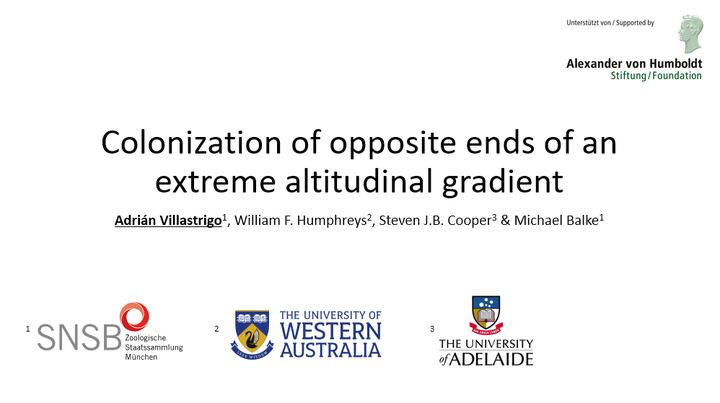Colonization of opposite ends of an extreme altitudinal gradient

Abstract
Altitudinal gradients are compelling by their steady change that may confine species to narrow conditions, leading species to habitat specialization and thus, a distinct fauna from their surrounding habitats. It is considered that most alpine lineages originated through dispersion from lowlands or from other mountain ranges, but this does not take into account the evolutionary trajectories of the pre-existing species before the orogeny (i.e., the feasible passive uplifting of local species). Notably, long-term uplifting rates for young orogenic belts can reach 1 mm per year, which implies that local taxa may be uplifting 1000 metres in just one million years. Considering the New Guinea orogen, tropical lowlands were uplifted to an altitude of nearly 5000 metres in the past 8 million years, creating a vast tropical alpine and upper montane habitat surrounded by wet tropical climate. At the opposite end of the elevational gradient, there are also some species adapted to living permanently underground. Colonization of subterranean habitats generally occurs by preadapted local species, but two hypotheses consider different scenarios: i) species are ‘forced’ to live outside surface habitats due to unsuitable surface environmental conditions (Climatic Relict Hypothesis (CRH)) and ii) species may access actively these habitats, where eventually they get confined (Adaptive Shift Hypothesis). Despite a large number of organisms able to survive in a wide altitudinal spectrum, it is rare to find lineages with representatives that inhabit both alpine and subterranean habitats. One remarkable example is the diving beetle genus Limbodessus, which includes representatives from groundwaters in Australia to, at least, 4200 metres elevation in the alpine region of New Guinea. Subsequently, species have developed extreme morphological traits related to cuticle, vision and wing development that enhance their fitness in these opposite habitats. To investigate how Limbodessus thrived in such contrasting habitats and understand the tempo and mode of evolution of their morphological traits, we carried out low-coverage whole-genome sequencing from museum specimens to extract mitochondrial genomes plus heritage markers, in combination with ultraconserved elements. Our preliminary results are compatible with multiple independent colonization of groundwater habitats consistent with the CRH (i.e., the ongoing aridification of Australia from the Middle to Late Miocene), but single colonization of alpine habitats about 10 Ma. The origin of alpine species coincides with substantial landmass formation in New Guinea, and posterior diversification events during the last 4 Ma in a scenario compatible with the passive uplifting hypothesis.